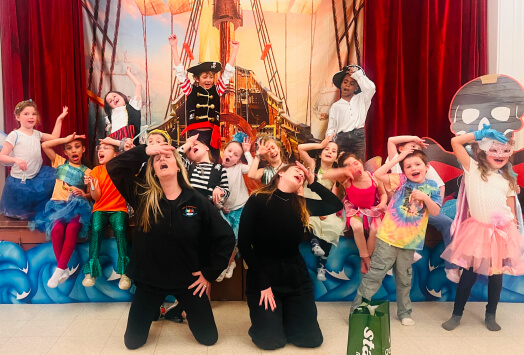If you run a camp for kids, you know that families take a lot into consideration when they make the decision to book a session for their child. The price, type of camp, dates, reviews, counselor bios, and more all go into this considered purchase. With the right marketing strategy and offers, you can make your kids camp stand out from the competition.
At Sawyer, our goal is to help camp providers run their businesses more smoothly so that they can spend more time changing the lives of their campers. In this article, we’ll outline one of our favorite discount strategies, early bird offers, as well as marketing ideas for camps to implement. If you are looking for more support, check out our ultimate guide to starting and running a kids camp.
- Early bird offers
- ~What are early bird offers?
- ~How are early bird offers beneficial for camps?
- Marketing ideas for camps
- ~Email marketing for camps
- ~Social media marketing for camps
- ~Advertising for camps
Early bird offers
You know the phrase, the early bird gets the worm. It’s time to put that old adage to use and increase your revenue at the same time.
What are early bird offers?
Early bird offers are limited-time discounts for people who book far enough in advance. Early bird offers work because the pain of paying, a behavioral science term, is removed from the fun of the event. In terms of camp, families also get the chance to spread out their large purchases so they are not all at the same time.

How are early bird offers beneficial for camps and customers?
Early bird offers are beneficial for the customer, of course, because they get a discount. However, it is also very useful for the business owner because they get the income from the purchase before the camp season starts. Business owners can use these funds to run marketing campaigns, buy supplies, and get ready for the camp season.
Camp owners can also learn which of their programs are the most popular and where they should direct more marketing efforts based on the early bird purchases. Early bookings, and eventual waitlists, are important for planning and business growth.
Marketing ideas for camps
Pew Research defines millennials as anyone born between 1981 and 1996. In 2023, that means that millennials span the ages of 27 to 42. That means that millennials are taking over as the parenting generation. As you plan your marketing strategies, think about how millennials interact with marketing and what will sway them to make a purchase.
- Trust user-generated content. Adweek found that 47% of millennials say that they trust UGC whereas 25% say they trust brand-created content. Check out our guide to learn how to ask customers for reviews so that you can increase your library of online reviews of your business.
- Embrace social media. In 2015, Pew Research found that 74% of the 91% of parents who use social media are on Facebook and 33% of parents under 40 are on Instagram. Use our guide to learn Facebook marketing strategies, Instagram Story ideas and more social media tips for your business.
- Want their children to have fun. In a TIME article, they report that a survey done in 2013 found that 61% of millennial parents believe that “kids need more unstructured playtime.” Keep this in mind when you showcase your camp in your marketing.

Email marketing for camps
Email marketing is a good tactic for camps that already have an existing audience base (from previous programming, years of camp, etc). In order for emails to be successful, though, they need to stand out in inboxes that are bombarded by emails every day. Use these tips and tricks to send high quality emails that break through.
- Hook your customer with a strong subject line. If you can get your customer to open your email, you have won half the battle. Strong subject lines create a sense of urgency, intrigue the reader, and showcase your value. Here are a couple of examples:
- ~Only 25 spots left for camp this summer!
- ~Book now! Winter break camps are almost full
- ~See what families have to say about our camp
- Offer incentives. If you can provide discounts or other incentives like a free trial in your email, then you can really hook the reader. Hint at it in the subject line and then use a strong call-to-action to bring them to your page.
- Keep it short and sweet. People are busy and they don’t have time to read long emails. Get right to the point in your email marketing.
- Include a call-to-action (CTA). At the end of your marketing email, use a strong CTA that encourages the reader to make a decision. Sometimes, the decision will be registering for your camp. However, other times it might make more sense for the CTA to be “schedule a call” or “learn more” if the reader is not yet ready to make a purchase.
Review our guide for more in depth information on email marketing for camps.
Social media marketing for camps
As mentioned above, social media marketing is important for millennials who are looking to make purchases. Use these tips for your social media in order to be successful on Facebook, Instagram, and beyond.
- Utilize high quality photos. These days, Smartphone photography is strong enough to impress your customers. You want parents to see that you are professional in everything you do. These images are the first impression a parent will get of your camp, so make sure they are full of smiling faces! Remember to always get permission from a parent or guardian before using a child’s picture in any type of promotional material.
- Highlight user-generated content. As we mentioned, UGC is one of the best ways to encourage millennial parents to book your camp. Ask families to share pictures in photo contests, re-share positive reviews, and get the excitement flowing with social media takeovers. Check out our full guide on user-generated content to see even more ideas.
- Connect with families. Social media is such a great tool because you can easily interact with potential and current campers’ families. By making connections, you are increasing the likelihood that they sign up for camp and refer friends.

Advertising for camps
Google Ads are an incredibly useful, and often cost-efficient, marketing tool for camps. Google Ads follow a Pay Per Click (PPC) advertising model, allowing business owners to bid on search terms, rank higher, and pay for the clicks their ads receive. There is no minimum spending requirement and you are in control of the copy, assets, and settings for their ads. You can choose where your ad appears, set a budget that works for you, and measure impact with analytics.
Use our full guide to learn how to set up Google advertising for your kids camp so that you can increase your audience.
We hope that this guide has provided you with useful information to help you create early bird offers and strong marketing strategies for your camp. If you are looking for guidance on managing and running your children’s education and activity business, the team at Sawyer is here to help.
With our suite of tools, like custom forms to record allergies and t-shirt sizes, flexible payment options like gift cards and installment plans, and seamless scheduling and registration on any device, Sawyer saves business owners 28 hours per month. If you are ready to spend less time on admin and more time doing more of what you love, see how Sawyer can help with a free trial or demo.





















.png)




















